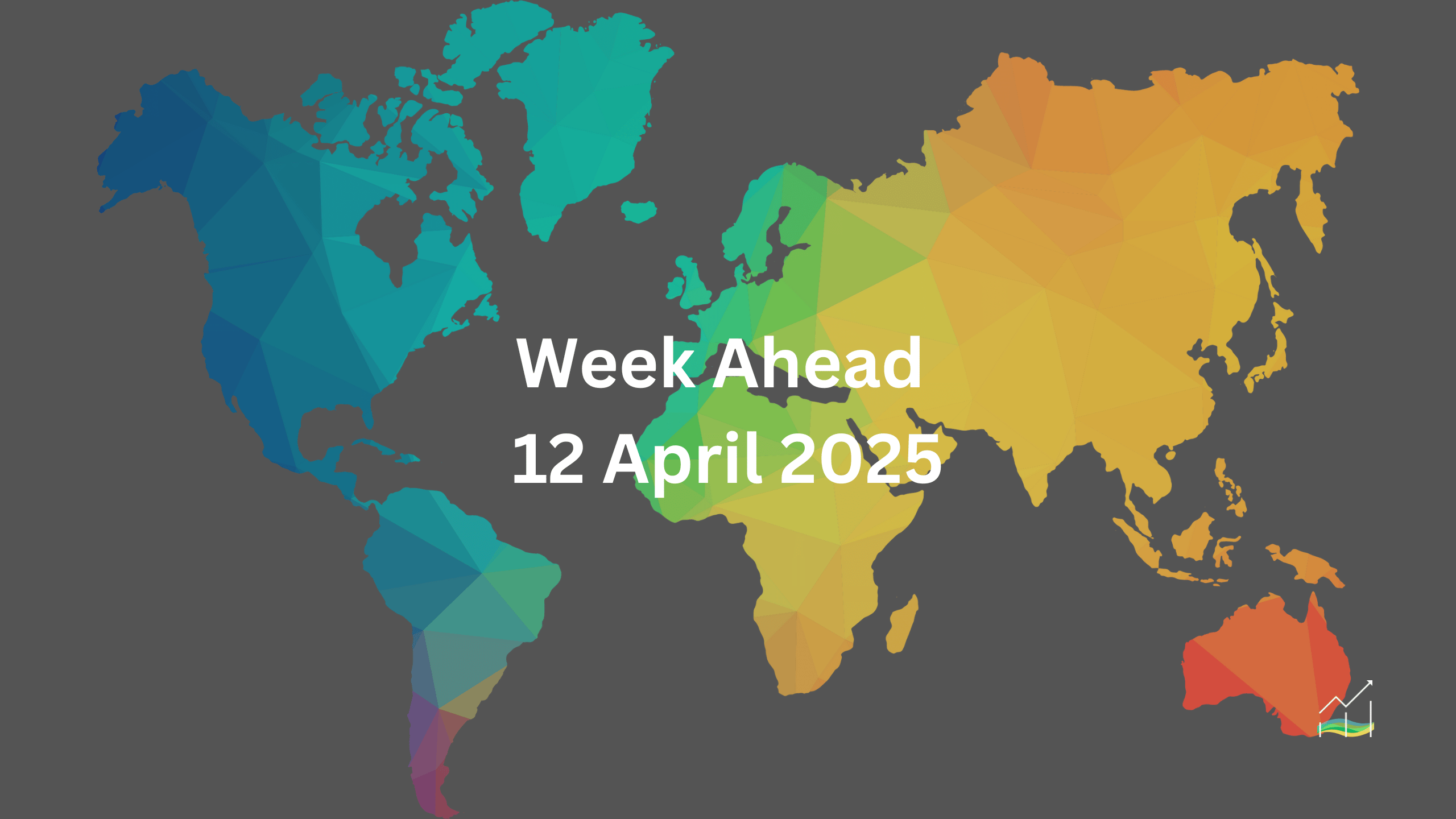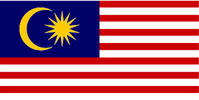12/04/2025 Week Ahead

Markets Stagger as U.S. Policy Shifts Trigger Global Reactions
Key Takeaways:
- Global markets remain volatile amid sharp US policy changes.
- Early signs suggest trade-related activity may be skewing economic data.
- March budget deficit was significantly worse than expected.
- US dollar unexpectedly weakened despite tariff expectations.
- Eyes on capital flow data and upcoming central bank decisions.
Global capital markets are grappling with the wave of uncertainty triggered by the policy shift under the new US administration. While it’s too early to gauge the full economic fallout, there are signs that certain economic indicators may be temporarily lifted as companies rush to adapt to tariff changes. Job losses across both public and private sectors haven’t yet made their way into jobless claims or the latest nonfarm payroll data.
Despite efforts by the administration to rein in government spending, the US budget deficit for March overshot expectations by around $15 billion, with Q1 showing a 7.5% year-on-year increase. The anticipated dollar appreciation in response to tariffs hasn’t materialized either. Instead, the greenback has fallen sharply, down nearly 4% since the end of January, undoing part of last year’s gains.
US equities and bonds are also under pressure, fueling concerns of a potential capital strike. Although the upcoming TIC report will offer insight into capital flows, it lags behind the most recent market turmoil and may not capture the latest sentiment shift. For now, volatility and uncertainty continue to cloud investor decision-making.
This week also brings key monetary policy decisions. The European Central Bank is widely expected to deliver a 25 basis point rate cut, while the Bank of Canada’s path is less clear. However, with the Canadian dollar gaining strength and the effects of US tariffs looming, a surprise move by the BoC cannot be ruled out.
United States of America
Overview
Markets are reacting sharply to the evolving US tariff policy, with the dollar falling in the wake of equity and bond market pressure. Despite significant economic imbalances and growing concerns about foreign capital withdrawal, the Federal Reserve is holding firm, and political tensions are beginning to surface in monetary oversight. The divergence between survey-based indicators and real-sector data continues to complicate the outlook.
Economic Drivers
- The US maintains a deeply negative net international investment position (~$26 trillion), increasing capital strike vulnerability.
- Reciprocal tariffs remain postponed, but average effective tariff is still over 20%, hindering growth and pushing prices higher.
- Fed shows no urgency to cut rates despite market volatility and rising pressure.
- Supreme Court ruling may enable presidential dismissal of Fed officials, raising concerns over central bank independence.
- Bipartisan efforts in Congress aim to reclaim legislative control over trade and tariff powers.
- Fed Chair Powell highlights the split between soft data (weakened surveys) and hard data (resilient payrolls and retail sales).
- Strong auto sales likely inflated retail figures; industrial output may be slowing again after a strong February.
Data and Events
- 15 April 2025 – Empire State Manufacturing Survey (April)
- 16 April 2025 – Industrial Production and Capacity Utilization (March)
- 17 April 2025 – TIC Capital Flows Report (February)
- 18 April 2025 – Initial Jobless Claims (weekly)
Price Action
- Dollar Index (DXY) dropped 2.5% in two sessions before short-covering lifted it to 100.10.
- Fell near 99.00, close to the 61.8% retracement of its post-pandemic rally.
- Previous support at 102.00 now acts as resistance.
- Next key support levels are 97.70 and possibly extending toward 95.00 if selling pressure resumes.
Key Points:
- Dollar weakness intensified despite Fed staying firm.
- Capital strike risk rising with $26T investment imbalance.
- Political shifts may affect Fed independence.
- Economic data remains mixed — hard data holds, surveys slump.
- DXY technicals show downside pressure remains dominant.
Australia
Overview
The Australian dollar experienced a sharp and sudden drop last week, falling more than 5% in what appeared to be a mini-flash crash. The extreme move raised concerns over liquidity fragmentation in the FX market. Despite a brief recovery, markets remain focused on signs of accelerating rate cuts and continued labor market weakness.
Economic Drivers
- Australian dollar fell over 5%, driven by market dislocation and illiquidity fears.
- FX move reached 3–4 standard deviations from the 20-day average — extreme by most metrics.
- Market increasingly convinced that rate cuts will begin next month and may accelerate.
- Futures pricing suggests nearly 125 bps of cuts in 2025, with a 40% chance of a 50 bp cut in May.
- Labor market shows signs of deterioration:
- 22k jobs lost in Jan–Feb 2025 (vs. +125k same period in 2024).
- Gains only in part-time work; full-time job creation stalled.
- Unemployment rose to 4.1% in February, up from 3.7% a year earlier.
Data and Events
- 16 April 2025 – RBA Meeting Minutes (April)
- 17 April 2025 – Employment Report (March)
Price Action
- AUD/USD plunged to five-year low near $0.5915 midweek before recovering.
- Rebounded to $0.6300 as USD weakened, then eased back to $0.6225 on position squaring.
- Closed above 20-day moving average (~$0.6245), stabilizing within the $0.6200–$0.6400 range.
- Despite recovery, volatility and downside risk remain elevated given fundamental headwinds.
Key Points:
- AUD flash crash highlighted FX market fragility.
- Markets expect rate cuts to begin in May and possibly accelerate.
- Labor market shows early signs of strain.
- RBA minutes and jobs data will guide next policy move.
- Price action has stabilized but remains vulnerable.
Canada
Overview
The Canadian dollar has strengthened sharply, driven more by the US dollar’s weakness than domestic fundamentals. While oil, equities, and short-term rate differentials remain secondary influences, political uncertainty and ongoing cross-border tension with the US add to the backdrop. Markets are divided on whether the Bank of Canada will cut rates this week, with inflation data due just a day before the decision.
Economic Drivers
- Canadian dollar is tracking US dollar direction more closely than oil prices, equities, or interest rate spreads.
- Markets remain split on BoC policy path — 55% chance of a cut priced in.
- Inflation risk rising amid ongoing trade war with the US.
- Political climate adds noise: Liberals lead in recent polls, and anecdotal reports suggest informal consumer/tourist boycott of the US.
- Year-end rate expectations have fallen from 2.65% in late 2024 to ~2.10% now.
Data and Events
- 15 April 2025 – Consumer Price Index (March)
- 16 April 2025 – Bank of Canada Interest Rate Decision
Price Action
- USD/CAD dropped ~3% in three sessions, reaching levels last seen in November 2024 (~1.3840).
- Closed below the 200-day moving average (~1.40) for the first time since October.
- Also broke below the key 61.8% retracement level (~1.3945) of the rally from September lows.
- Next major support seen at 1.3800–1.3825 range.
Key Points:
- Canadian dollar surged as USD weakened sharply.
- BoC rate cut still uncertain — CPI may be decisive.
- Political and cross-border sentiment adds a layer of risk.
- Technical momentum favors further CAD strength.
- Focus now on inflation and policy response.
China
Overview
The Chinese yuan showed signs of increased flexibility last week, with the PBOC appearing more tolerant of a weaker exchange rate. While the official tools to manage the daily fix and trading bands remain in place, the surprise has been the dollar’s weakness — not yuan devaluation. All eyes now turn to China’s upcoming Q1 GDP and trade figures, which may reveal early effects from front-loaded exports ahead of US tariff threats.
Economic Drivers
- PBOC appears to allow more exchange rate flexibility while still controlling the daily fix and 2% band.
- Broad expectations of yuan devaluation were reversed by unexpected dollar weakness.
- Increased implied volatility (3-month vol at 7.6%) signals more tolerance for short-term currency movement.
- Offshore yuan (CNH) traded weaker than onshore yuan (CNY), possibly reflecting reduced speculative pressure.
- Beijing remains focused on maintaining general yuan stability with some controlled volatility.
Data and Events
- 16 April 2025 – Trade Balance (March)
- 16 April 2025 – Gross Domestic Product Q1 2025
- 16 April 2025 – Industrial Production (March)
- 16 April 2025 – Retail Sales (March)
- 16 April 2025 – Fixed Asset Investment YTD (March)
Price Action
- USD/CNH peaked near 7.43 (record high), then fell below 7.2800 before settling near 7.2875.
- The greenback reversed a three-week rally, snapping a short-term uptrend.
- Onshore USD/CNY also declined, reaching around 7.2920 after touching levels above 7.35 (highest since 2008).
- Despite recent moves, the dollar remains slightly up (~0.7%) year-to-date vs. yuan.
- Volatility has risen, but PBOC remains in control through daily fixings and regulatory bands.
Key Points:
- Yuan shows more flexibility, but remains centrally managed.
- USD weakness, not yuan devaluation, drove recent FX moves.
- March trade and Q1 GDP data will reveal economic momentum.
- Volatility highest since 2022, signaling shifting currency dynamics.
- CNH/CNY spread may reflect reduced speculative activity.
Europe
Overview
The ongoing trade war has emerged as another major global shock, just as signs of recovery were beginning to surface across Europe. Despite weak survey data, underlying momentum appears to be building. Markets are strongly pricing in a European Central Bank rate cut this week, and confidence has been supported by improving expectations data out of Germany. The euro surged to a multi-year high before pulling back slightly, reflecting heightened volatility and shifting sentiment.
Economic Drivers
- Trade war now joins Ukraine invasion and China de-risking as major economic shocks.
- ECB widely expected to cut rates this week — over 85% probability priced in.
- Deposit rate currently at 2.5%; swaps pricing implies 1.65% by year-end.
- Confidence data mixed:
- Germany’s ZEW current assessment remains weak at -87.6.
- Expectations component surged to 51.6 in March, highest since Ukraine war began.
- Recovery appears to be taking hold beneath the surface despite muted PMI readings.
Data and Events
- 15 April 2025 – Eurozone Industrial Production (February)
- 16 April 2025 – ZEW Economic Sentiment (April, Germany)
- 18 April 2025 – European Central Bank Interest Rate Decision
Price Action
- EUR/USD spiked to $1.1475 — nearly four standard deviations from the 20-day average and highest level in three years.
- Pulled back to $1.1275 before rebounding and closing at $1.1355.
- Key resistance lies above $1.1500, with next significant level near $1.1685.
- Volatility elevated as euro responds to rate expectations and dollar weakness.
Key Points:
- ECB rate cut this week is widely expected.
- Euro hit three-year high amid rising expectations.
- German sentiment improves, but current conditions remain weak.
- Recovery building quietly underneath weak surveys.
- Technical momentum favors further euro upside if $1.1500 is breached.
Japan
Overview
The Japanese yen remains heavily influenced by US interest rate movements, which continue to dictate its exchange rate behavior. Often seen as a safe-haven and a funding currency in global markets, the yen strengthens during broad asset liquidations. Despite recent speculation, the probability of a rate hike at the May 1 meeting remains low. Upcoming trade and inflation data will offer insight into Japan’s economic positioning amid global tensions.
Economic Drivers
- Yen strength still driven by US rate moves and safe-haven flows.
- The yen is often used in carry trades; liquidation of those positions leads to yen buying.
- Market does not expect a rate hike from the Bank of Japan on May 1, despite inflation pressures.
- Japan posted its first trade surplus since 2021 in February — the largest since then.
- Inflation expected to remain firm:
- Headline CPI may rise from 3.7%.
- Core CPI (ex-fresh food) seen at 3.2% (from 3.0%).
- Core-core CPI (ex-fresh food and energy) may reach 2.9% (from 2.6%).
Data and Events
- 17 April 2025 – Trade Balance (March)
- 19 April 2025 – Consumer Price Index (March)
Price Action
- USD/JPY dropped ~2.3% last week — one of the largest weekly declines since mid-2023 carry trade unwind.
- Fell to near JPY142.00, holding just above three-standard deviation support (~JPY141.85).
- Rebounded to ~JPY144.00 on US 10-year yield spike, but settled near JPY143.55.
- USD/JPY has fallen ~10.6% since early January; momentum remains bearish.
- Key support lies in the JPY139.60–JPY140.00 range.
Key Points:
- Yen gains driven by falling US yields and risk-off sentiment.
- BOJ rate hike unlikely despite inflation ticking higher.
- March trade surplus and CPI figures will shape outlook.
- Technicals suggest further downside potential for USD/JPY.
- Carry trade unwinds remain a risk factor.
United Kingdom
Overview
Sterling remains heavily influenced by broader dollar movements rather than domestic interest rate dynamics. A strong inverse correlation with the Dollar Index suggests external pressures dominate the short-term outlook. Despite some signs of labor market cooling, sticky wage growth and high services inflation may keep the Bank of England cautious. However, markets remain confident that the rate-cutting cycle will begin soon.
Economic Drivers
- GBP shows strong inverse correlation with Dollar Index (30-day correlation: -0.82), stronger than with UK or US yields.
- Sterling’s correlation with the euro also contributes to the relationship with DXY.
- Labor market is gradually softening, but wage growth remains high:
- Weekly earnings at 5.8%–5.9% overall; 6.1% in private sector (YoY, 3M avg).
- Elevated wage growth continues to support high services inflation (5.0% YoY in February).
- Market expects a BoE rate cut in May and possibly three total cuts this year.
Data and Events
- 16 April 2025 – Labor Market Report (February/March)
- 17 April 2025 – Consumer Price Index (March)
Price Action
- GBP/USD rose ~3.3% in a four-day rally, ending the week near $1.3085.
- Topped out just below $1.3150 before retreating slightly on profit-taking.
- Support found near $1.3030; previous high on April 3 was just above $1.3200.
- Further resistance seen at $1.3325, with last year’s high near $1.3435.
- Bullish bias remains intact unless the pair breaks below $1.30.
Key Points:
- GBP driven more by USD trends than local fundamentals.
- Strong wage growth and services inflation keep BoE cautious.
- Market confident of rate cuts starting in May.
- Key data this week could refine expectations.
- Technical outlook favors further gains if $1.3200 is cleared.
© 2025 SKONE Enterprise (003319453-V). All rights reserved.
The content on this site is for informational purposes only and does not constitute financial advice.


